How to Keep Rodents Out of Your Car
Keeping rats and mice out of your car can be tricky for homeowners and pest control professionals. Rodent damage in cars can leave you with massive repair bills and put your safety at risk.
But why are rats and mice drawn to vehicles in the first place? And how can you keep them from turning your car into their next cozy hideaway? Let’s break it all down and make sure your ride stays rodent-free.
Why Do Rodents Get Into Your Car?
Rats and mice love finding cozy hiding spots, and your car offers everything they need. Here’s why they keep sneaking in:
Warmth and Shelter
When temperatures drop, your car’s engine compartment feels like a heated hotel for rodents. The warmth draws them in, especially during the colder months. Once inside, they’ll tear up upholstery, insulation, and wires to build nests .
Food Sources
Leaving food or crumbs in your car is like rolling out the red carpet for pests. Rats and mice have sharp noses, so even a tiny snack wrapper or leftover crumbs can lure them in. Parking near trash bins, gardens, bird feeders, chicken coops, fruit trees, and bushes attracts rodents looking for their next meal.
Lingering Scents
Your car might still attract rodents even if you don’t leave food out. Scents left behind by previous infestations, like droppings or urine, act as an invitation for other rodents. They’ll follow if they smell a cozy place others have used.
Soy-Based Wiring
Vehicles built in 2008 and newer have a unique allure for rats and mice. Many car and truck manufacturers have gone to using soy bio-plastics in order to save money and become more eco-friendly. That might sound great, but there is a downside: the wiring harnesses in these vehicles are made of a specific bio-plastic that is a soy derivative, which is extremely attractive for rats, mice, and squirrels. Many of us have fallen victim, and had wiring harnesses and other items in our vehicles damaged or destroyed as a result.
Safe Nesting Spots
Your vehicle has tons of small, dark areas that rodents love. Spaces like engine compartments, air filters, glove boxes, and trunks make perfect nesting spots where they can hide and stay safe from predators.
What Kind of Damage Can Rodents Do to Your Car?
Rodents can wreck your car before you even realize they’ve moved in. From chewed wires to health hazards, mice and rats cause damage that can leave you with expensive repairs and serious safety issues.
Health Risks from Rodents in Your Car
Rodents can spread harmful diseases like hantavirus, leptospirosis, and Salmonella . If they nest in your vehicle’s air filter or ventilation system, their droppings, urine, and dander can contaminate the air you breathe. Even without disease, the dust and debris they leave behind can trigger allergies and respiratory problems.
Mechanical Damage You Can’t Ignore
Rodents will chew through just about anything. They often target wires, which can lead to problems with your radio, lights, power steering, or even critical systems like brakes. Electrical damage from chewed wires can be dangerous if essential components stop working while you’re driving.
Rats and mice also love nesting in tight spaces, and if they clog your engine or exhaust system with leaves, paper, or fabric, it can cause overheating or stalling. These blockages can be difficult to detect until they’ve already caused significant damage.
Beyond that, rodents aren’t picky when it comes to finding nesting materials. They’ll tear apart seats, insulation, and other fabrics to build their nests, leaving behind shredded material, droppings, and stains that are tough to clean and even tougher to get rid of completely.
How to Protect Your Car from Rodents
Keeping rodents out of your car requires a proactive approach and a few smart strategies.
Start by keeping your vehicle clean. Crumbs, wrappers, and clutter are like an open invitation for mice and rats. The cleaner your car, the less appealing it is to pests.
Keeping your engine compartment clean also makes a difference. A thorough steam cleaning helps remove grease and other scents that attract rodents.
And while you’re at it, take a look around your parking area. Are there garbage cans, bird feeders, or thick vegetation nearby? Those things can draw rodents right to your car, so clearing them out can make a big difference.
Switching up your parking spots can help, too. Rodents are creatures of habit. If you park in the same spot every day, you’re giving them time to settle in. Moving your car around makes it tougher for them to establish a nest.
Trap traps are a solid first step if you’ve already spotted signs of rodents. Snap traps and glue boards can help eliminate the immediate problem. You can also try natural deterrents like peppermint oil to make your car less appealing.
Want even more protection? Wrap your wires and harnesses with capsaicin-infused tape. It’s designed to keep rodents from chewing through important components, and it’s especially helpful for newer cars that use soy-based wiring.
Tired of dealing with rodents in your car? Sentinel Pest Control has you covered . Our expert team knows how to keep mice and rats out of your vehicle for good. Contact Sentinel Pest Control now to schedule your free consultation!
Sentinel Pest Control is a full-service pest management company that offers residential and commercial pest management services.
Each of our comprehensive services is tailored specifically to the needs of our customers. Along with one-time treatments, we also offer monthly, quarterly, and annual preventative programs and custom pest control service packages.
How To Keep Mice Out Of Your Car Engine Compartment

I believe in treating all creatures with respect. My mission is to ensure everyone understands how to protect their home from rodents without using cruel methods.

Getting mice in your engine could be costly.
Firstly, you have the cost of the repair. Secondly, you may drive a car with unknown damage. That could result in an accident.
You need to get rid of them ASAP to stop them from coming back! After all, a car in one of the places mice like to nest outside.
Here is my guide for dealing with mice in your engine compartment.
Contents show
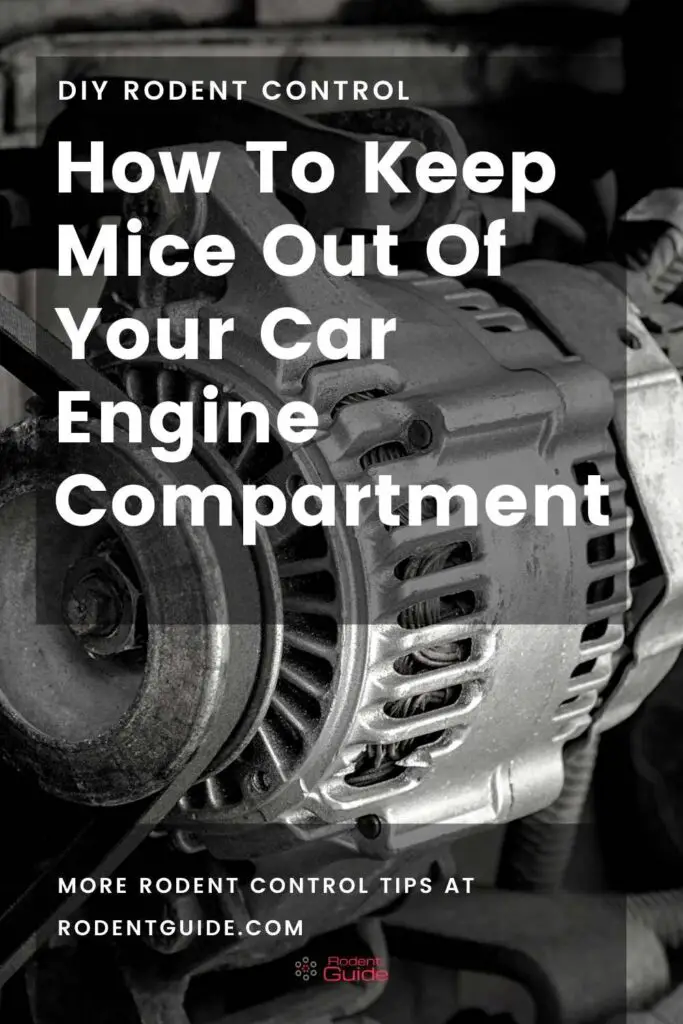
How do mice enter your car?
Before contemplating how to keep mice out of your car engine compartment, you need to find out how they gain access to your car.
While your car might look protected after locking it, mice have several ways of gaining access to your car. Because of their size, it is easier for them to squeeze themselves through little openings.
In most situations, they crawl into your car engine from under the car and make their way to different compartments in your engine.
- Pedal shafts
- Vents
- Steering columns
- Holes around cables
Besides these, mice can enter your car compartment if you have a broken or cracked window. Therefore, it is vital to keep your car unattractive and inaccessible to these little creatures.
Signs that indicate you have mice in your car
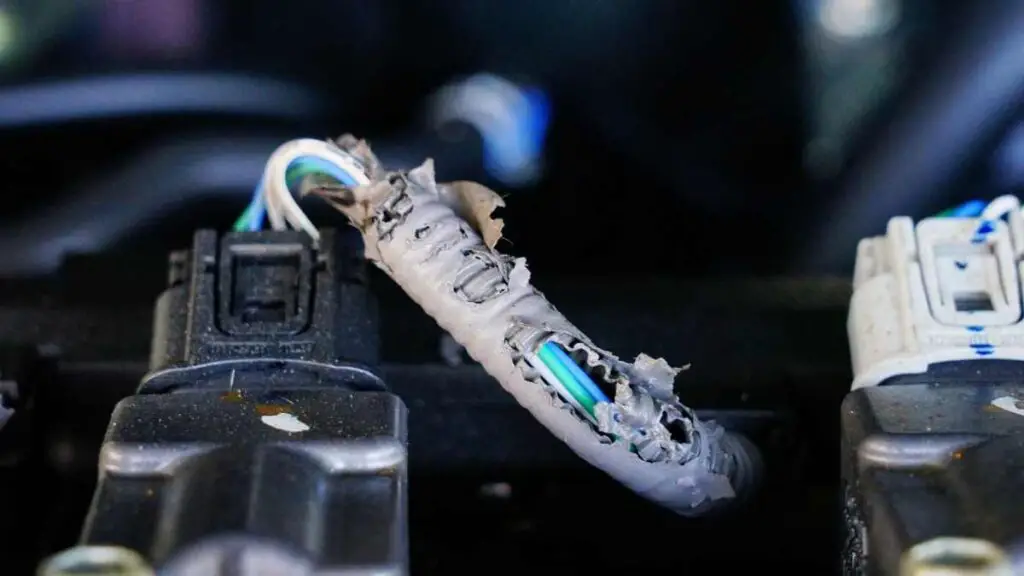
If you have a car, here are a few signs that will tell you that you are under a mice attack.
Once you notice at least two of these signs, it is time to swing into action; else, they will probably make a mess of your car.
Unpleasant Smell
If you have an air freshener in your car but still experience an unpleasant smell, it is a pointer that you are under mice attack.
While you might not see the mice, the presence of a bad odor is a sign that signifies their presence.
Noise
Hardly can mice stay in a car and not chew or make scratching noises.
These noises will often be scratching your car engine surface or biting wires in your engine compartment.
Once you notice an unfamiliar sound in your car, you have a visitor in your car to deal with.
Chew marks
While this might not be common in new cars, there is the possibility of seeing chewing marks in an old car.
Therefore, check for chew marks on the seat belt, cushion, floor mat, etc.
Mice chew everything!
Faulty Display
When mentioning chew marks, mice can chew wires connected to your display unit.
This can affect the unit and lead to a faulty display on your car dashboard.
What can mice do to your car?
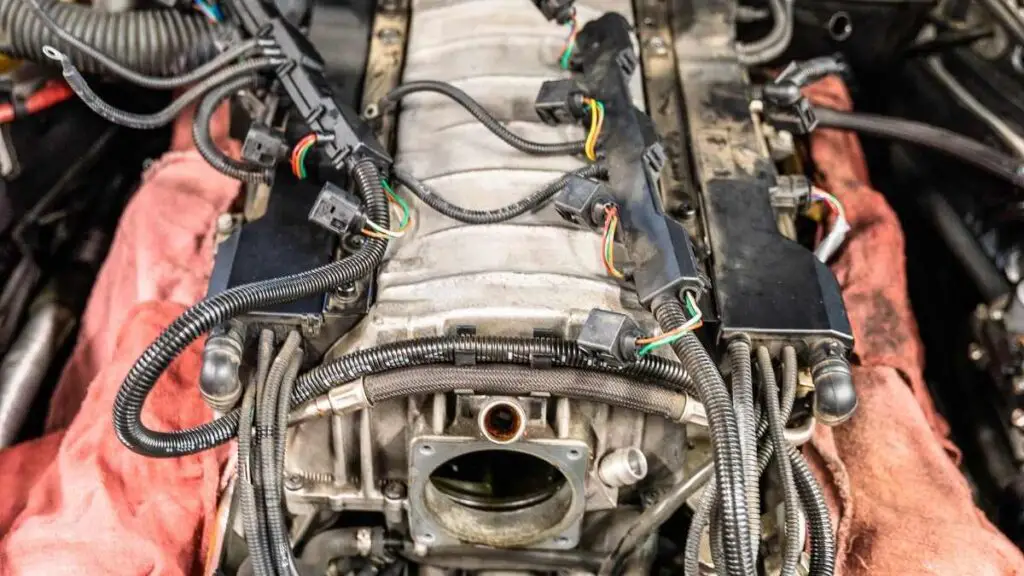
Once these creatures gain access to your car through the aforementioned means, they create havoc that might cost you.
Firstly, they can cause foul smells in your car, which leave your interiors unhygienic. Furthermore, they chew your cables, which will require replacement.
In addition, the wiring system can get faulty because of chewing, which can result in accidents and affect other parts of your car.
Regrettably, once they build a nest for themselves and multiply, they pose a bigger problem that makes it hard for you to drive the car.
Therefore, you need to find a feasible solution to deal with these mice before they wreak havoc that will cause you to break the bank.
How to keep mice out of car engine compartment
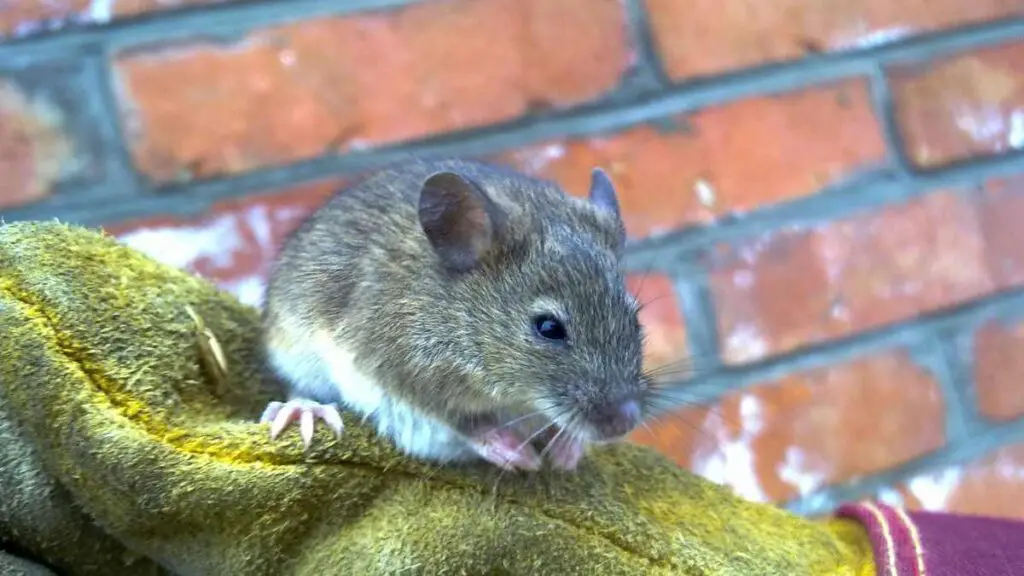
Dealing with mice isn’t something to take lightly because of the danger they pose to your car.
Nevertheless, you can use the following proven ways to keep mice out of your car. Importantly, you have to select the best option that suits your environment, resources, and vehicle.
Furthermore, you can combine these methods to keep mice out of the car engine compartment to get a better result.
1. Park your car in a garage
If your home has a garage, you should use it.
Indeed, mice can also get access to your garage, but if you seal up any entry points and keep them tidy, the chances are slim.
By keeping the car in your garage, you reduce the chances of getting into the engine compartment.
2. Honk them away
Although not the best option, you can scare them away by honking your horn.
If your car key fob has that function, you can do that from a far distance.
Loud noises tend to scare mice away as they love to hang around a quiet environment.
Nevertheless, you don’t have to go overboard and upset your neighbors while honking your car.
Before starting your car, wait for some seconds after horning. However, this might not permanently chase the mice away as they will eventually return after the environment is calm again.
Therefore, you can not really rely on this one method to deal with mice in your car engine.
3. Use Mouse deterrents
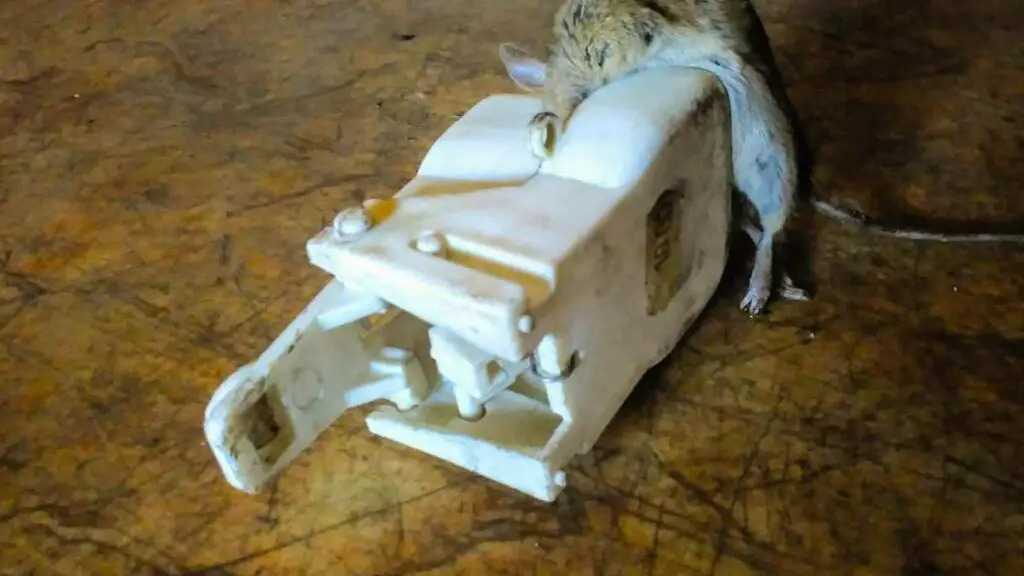
You have several chemical and physical options to deter mice from entering your car engine compartment.
Depending on your environment, resource, and car, you can combine the following mice deterrents:
Scent repellents
You can use cayenne pepper, peppermint oil, or cedarwood around your car.
Naturally, mice avoid these scents, and those are a more humane option compared to using poisons.
However, avoid placing these scent repellents close to your windshield washer area; else, the smell will infiltrate the car’s interior.
Electronic repellent
You can use electronic repellent to deter mice from your car.
The electronic repellent is a cordless device you can place inside your car, which emits a tone whenever it hurts mice.
However, it is inaudible to humans when in use; you have to check if it has caught any mice once in a while.
They can be quite effective in dealing with mice in your car.
4. Mouse Traps
Another option is to use mouse traps, which can keep mice away from your car engine.
Once you notice the entry point, you can place them close to this area and wait for the mice to get trapped.
These mouse traps are of various types, including snap traps and live traps.
I recommend a multi-catch mouse trap, because you can leave it for a couple of days.
5. Clean your surrounding
Most times, mice find your car as a breeding ground if your environment is not clean.
Therefore, find any potential hiding place and keep the place clean. Furthermore, avoid parking your car close to a supermarket or a garbage can.
Overall, clean your surroundings and never allow mice to build a nest for themselves.
Keeping a hygienic, litter-free, and non-cluttered environment will save you a lot of trouble in the future.
No Food Zone
While cleaning your environment helps a lot, avoid leaving food items in your car.
Rats and mice are living creatures and must find food for them to survive. Therefore, when you leave food items or particles in your car, you attract these rodents into your vehicle.
To restrict their movement into your car, ensure your children don’t drop any food crumbs while eating. Therefore, make sure you do not eat in the car.
What next after using mice deterrent
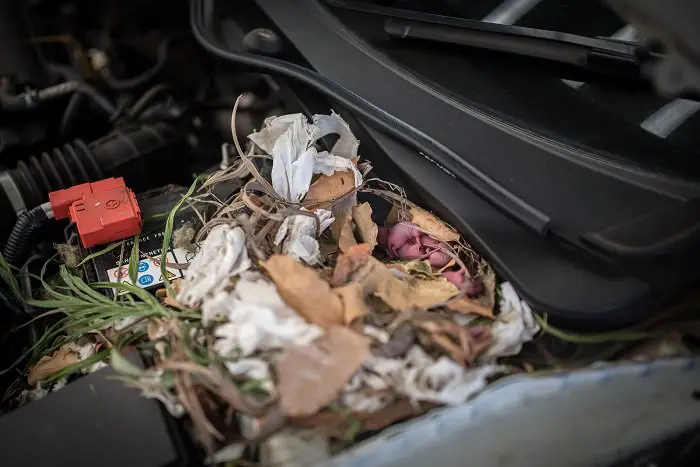
In most situations, the mice will die in your car, which means you need to do some cleaning. Do not vacuum the vehicle immediately.
Remember, mice urine and dropping can cause Hantavirus when you breathe it.
Therefore, first, take your car to an open area to air it out.
Get cleaning items with rubber gloves to protect yourself.
Mix water with household bleach to spray the affected areas. Allow it to stay for five minutes before wiping the area with a paper towel.
Furthermore, use a sponge with the bleach solution to scrub the area.
Finally, trash the items you use in a plastic bag while washing your hands using soap after removing the gloves.
Conclusion
Having a mouse in your engine spells danger! It could cost a lot of money to fix, and it could cost a lot more if they chew through something and the car becomes faulty.
You should pop the hood every once in a while and check the engine bay for signs. Whilst you have it open, please give it a clean. A clean engine bay will reduce the chances of an infestation.
